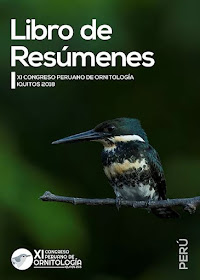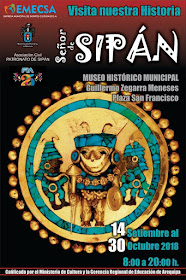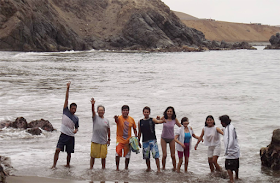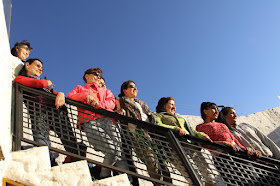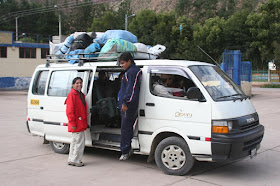
By Lizzie Wade
July/August 2018
For years, archaeologist Timothy Pugh thought he was simply following the cows as he walked across the site of Nixtun-Ch’ich’, an ancient Maya city in northern Guatemala. The site, whose name means, roughly, “a rocky place,” is located on a peninsula that juts out like a pointed finger into Lake Petén Itzá. It is now part of a cattle ranch, covered with tall grass—perfect grazing land. Most of the other Maya sites in the area are obscured by dense thickets of jungle, so this was a lucky break for Pugh and his colleagues. Still, the nearly knee-high vegetation wasn’t easy to move through. Pugh tended to follow the paths the cattle had already created as they tamped the grasses down with their hooves while they grazed, picking their way between mounds containing the remains of ancient ceremonial platforms up to 13 feet high.
With an area of about one square mile, Nixtun-Ch’ich’ was unusually compact compared to other Maya cities, which were largely spread out throughout the jungle. Back in 1995, Pugh, now at Queens College, and his adviser at the time, Prudence Rice, an archaeologist and professor emerita at Southern Illinois University Carbondale, mapped the site by identifying ancient buildings from their raised outlines on the surface and recording a GPS point at each of their corners. But by 2013, Pugh thought the map of Nixtun-Ch’ich’ was due for an update. New technology had transformed mapping techniques, allowing archaeologists to gather more GPS data than ever before, including subtle changes in terrain. “We collected 80,000 points in just a few months. With the old machines, that would have taken years,” Pugh says. More importantly, he no longer had to limit himself to the buildings he could see. Now, Pugh could simply record a GPS point every 6.5 feet, whether he thought there was a building there or not. “In that way, you don’t bias the data while you’re working,” he says.
The effort quickly paid off. The GPS equipment detected slight rises and falls in the landscape that had been all but invisible beneath the grass. Buildings and streets Pugh hadn’t noticed before began emerging from the data. And when he started piecing together a new, more complete picture of Nixtun-Ch’ich’, a striking pattern jumped out at him. The city’s buildings were arranged in straight lines, like the structures on a modern city block. Major streets ran almost exactly east-west, with shorter north-south avenues intersecting them at nearly perfect 90-degree angles. It was unmistakable: Nixtun-Ch’ich’ was laid out on a grid, an urban form so unusual in Mesoamerica that Pugh and Rice had never even thought to look for it. Pugh then realized that the paths he had been following through the grass weren’t originally created by grazing cattle. The animals were walking along ancient streets, and he had been too.
“In the Maya area, it’s unique,” says Pugh. “There’s no other site like it that we know of yet.” David Freidel, an archaeologist at Washington University in St. Louis who studies the Maya, agrees. “It’s an astonishing discovery,” says Freidel. “It’s a planned, gridded city. It has big plazas, big pyramids...it has everything you expect, only it’s not dispersed over a landscape.” Nixtun-Ch’ich’ is so far outside the norms of Maya city planning that Pugh and Rice first thought that foreigners must have built it. But as they’ve continued to excavate, they’ve realized that Nixtun-Ch’ich’ was unequivocally a Maya invention—and that it might reveal why these ancient people settled down and built cities in the first place.
rst, Pugh and Rice believed they understood the significance of the grid. The only other Mesoamerican city laid out on a grid was Teotihuacán, 600 miles to the north. From A.D. 100 to 550, Teotihuacán was the most powerful empire in central Mexico, and its influence stretched well into the Maya world. Hieroglyphic stelas at sites including the Classic Maya capital of Tikal, just 45 miles northeast of Nixtun-Ch’ich’, demonstrate just how influential Teotihuacán may have been. They record the arrival of foreigners in Tikal in A.D. 378 and depict the newcomers carrying a type of spear-thrower called an atlatl and wearing headdresses adorned with tassels, features commonly depicted in murals at Teotihuacán. Many archaeologists believe the foreigners were emissaries from Teotihuacán, but this wasn’t a passing diplomatic visit, or even a trade mission. A year after the Teotihuacanos’ arrival, Tikal’s king died, and his successor is shown wearing Central Mexican garb. Somehow, the newcomers had taken over the throne, and they held onto it for generations.
So when Pugh and Rice began trying to figure out who built Nixtun-Ch’ich’ and why, they immediately turned to Teotihuacán. Its grid was precise, covering nearly 14 square miles, and at the city’s height, more than 100,000 people lived in its standardized multifamily apartment buildings divided into well-planned neighborhoods. While Nixtun-Ch’ich’ was much smaller than Teotihuacán, the similarity was striking. “I really, really thought that the Teotihuacanos had come into this area, established a base, and built a city that mimicked their home,” says Rice.
Among the artifacts unearthed at Nixtun-Ch’ich’ is this ceramic human figurine dating to the Middle Preclassic (800–500 B.C.), the same period when the city’s urban grid was established.
When Pugh and Rice excavated in Nixtun-Ch’ich’, however, they realized the grid was much older than they had initially thought. As they dug into the streets and avenues, they uncovered ancient plaster surfaces that once functioned like pavement, and they were able to collect tiny pieces of bone and charcoal. Once these had been radiocarbon dated, it became evident that the grid had been built before 500 B.C., at least 900 years before the Teotihuacanos arrived in the Maya area.
That meant Nixtun-Ch’ich’ was built in the Middle Preclassic period, which lasted from about 800 to 300 B.C. “This is a time in which Maya society was changing,” says Takeshi Inomata, an archaeologist at the University of Arizona who studies this period of Maya history. During the Middle Preclassic, the Maya switched from being hunter-gatherers who relied on the bounty of the jungle to farmers who grew maize, fruit, and many other crops. They settled down in their first cities, built huge ceremonial centers for religious rituals, and started trading with each other. “The Middle Preclassic period is really the beginning of Maya civilization,” Inomata says.
Pugh was stunned by the city’s antiquity. “It was once thought that grids were the apex of city planning,” he says. The first villages were settled organically, the thinking went, without any community or leader explicitly planning their layout. As they grew, they became more and more organized—and increasingly hierarchical. But Nixtun-Ch’ich’ shows that wasn’t always the case. “A grid doesn’t have to be something that gradually develops over time,” Pugh says. “It can just be made up at the very beginning of a city.”
Living in Nixtun-Ch’ich’ would have required habits and customs that would have been unfathomable to residents of other Maya cities. Unlike the densely populated urban core of Nixtun-Ch’ich’, other Maya cities were decentralized, with clusters of buildings and plazas connected by roads through the jungle. Even at major capitals such as Tikal and Copán, in Honduras, the city was integrated into the forest. “There would have been very little green space in Nixtun-Ch’ich’,” says Pugh. And much less privacy, with your neighbors always close by. Still, thousands of people successfully lived there for millennia, never building over the grid or modifying its layout to resemble other Maya sites. “Why?” wondered Pugh and Rice. What made Nixtun-Ch’ich’ special?
At Nixtun-Chi’ch’, the subtle remains of a pyramid (foreground, marked by two trees and a rusted tank), and a platform (covered, in part, by excavation tents), formed a ceremonial alignment known as an E-group.
Many archaeologists who study the cities of the Middle Preclassic think their very designs were charged with religious significance. Rice pondered this premise in terms of Maya mythology. For example, these sites are often found to have incorporated a cenote, or water-filled sinkhole, into their layouts. Cenotes dotted the Maya lowlands and were the main source of fresh water in a landscape in which rivers and lakes are rare. But they had mythological as well as practical significance. In Maya cosmology they represented the underworld, which was conceived of as a watery cave to which the sun would return every night.
Given its location on a peninsula in Lake Petén Itzá—which, at 20 miles long, is by far the largest lake in the Maya lowlands—Nixtun-Ch’ich’ wouldn’t have needed cenotes to supply its fresh water. Pugh and Rice, though, think they have found one in the heart of the city’s ceremonial center. Today it is dry, visible as an eight-foot-deep depression that runs 150 feet north to south and 100 feet east to west. When Pugh and Rice dug excavation pits into the sides of the depression, they never reached bedrock, even after digging more than 20 feet below the surface—but the soil at that level was damp. This suggests the depression wasn’t a human-made reservoir but rather a natural cenote that had once been open to the water table below. During the Middle Preclassic, it likely filled with water every year during the rainy season.
Just to the west of this probable cenote lies a significant ceremonial complex known as an E-group. Found in early cities all over the Maya lowlands, E-groups consist of a pyramid sitting directly west of a long platform that has three structures built atop it. From the steps of the pyramid, facing east, one would see the sun rise over the three buildings. On the equinoxes the sun would be perfectly aligned with the center building, and on the summer and winter solstices it would rise directly over one of the other two. With the cenote lying just behind the eastern platform, as it does at Nixtun-Ch’ich’, the sun would appear to be rising out of the watery underworld. According to M. Kathryn Brown, an archaeologist at the University of Texas at San Antonio who studies the Middle Preclassic, the builders of these early Maya sites “are trying to embed their worldview, their cosmology, into their city.”
This large ceramic serving vessel is one of several unearthed at a natural depression, possibly the site of community-wide ceremonial feasts.
Pugh and Rice found evidence that the people of Nixtun-Ch’ich’ likely gathered at the cenote for rituals. Their excavations uncovered terraced walls along the edge of the cenote, where large groups of people could sit or stand during ceremonies. The ceramics they found in the depression were mostly large serving vessels, and they also uncovered turtle and other animal bones and snail shells—likely the remains of community-wide feasts.
Rice knew, therefore, that Nixtun-Ch’ich’, like many other Middle Preclassic Maya cities, was probably built to be a kind of sacred landscape, embodying religious beliefs and creating a space for the community to celebrate them. The pairing of the cenote and the E-group was a feature of the urban plan that clearly had mythological significance. So, she wondered, could the grid also have its roots in Maya mythology?
From a cosmological perspective, the city’s location on a peninsula was evocative. Creatures that could move between land and water carried particular symbolic weight in Maya mythology, and were considered beings that could straddle the Earth and the underworld. In fact, a common origin myth throughout Mesoamerica involved a crocodile floating in a primordial sea. At the Maya city of Palenque, for example, glyphs specifically describe this creature as a crocodile with a hole in its back. According to the myth, the gods slit its throat, and in the torrent of blood the Earth was created from its body. When Rice imagined the peninsula of Nixtun-Ch’ich’ as a crocodile sliding into the lake, the grid suddenly took on a new meaning. “Scales,” she thought—the regularly spaced city blocks were the crocodiles’ scales. The cenote was the hole in the back of the sacred crocodile whose body would form the world. A defensive wall, lined with a ditch, that runs 1,000 feet north to south near the eastern tip of the peninsula, could have represented the gash the gods made in the crocodile’s neck. “Here we had this myth about a crocodile with a hole in its back floating in a primordial sea, and its throat being cut,” says Rice. “And I look at the map of Nixtun-Ch’ich’, and, my gosh, it’s there!”
This ceramic brick from the ancient Maya city of Comalcalco depicts a crocodile, a sacred animal whose form may have inspired the layout of the urban grid at Nixtun-Chi’ch’.
“I see the similarities—it’s pretty hard not to,” says Kathryn Reese-Taylor, an archaeologist at the University of Calgary who studies early Maya cities. “If it’s anything, it would be a crocodile. But that’s a very difficult hypothesis to actually prove.” Inomata agrees. Without a one-of-a-kind artifact like a painting or a diorama that explicitly compares the layout of Nixtun-Ch’ich’ to a crocodile, he says it’s impossible to know if that’s what the builders of Nixtun-Ch’ich’ had in mind.
Other archaeologists find Rice’s provocative hypothesis more convincing. Freidel describes the first time he looked at the map of Nixtun-Ch’ich’ through the lens of the crocodile creation myth as like being “hit over the head by a two-by-four.” And it fits nicely with archaeologists’ growing understanding that early Maya cities were built as sacred landscapes, says Brown. Although Pugh didn’t work with Rice to develop her crocodile hypothesis, he agrees the grid at Nixtun-Ch’ich’ likely had a sacred meaning. “In Maya cosmology, an ordered universe was a good universe,” says Pugh. “Nixtun-Ch’ich’ was created by someone with the image of the perfect world.”
If the builders of Nixtun-Ch’ich’ really did set out to construct a city that embodied their creation myth, that would also shore up the growing consensus among archaeologists that the earliest leaders in the Maya area drew their authority from religion, rather than economic wealth or prowess in battle. In the Middle Preclassic, “you can’t separate political power from religious power,” says Reese-Taylor. But debate still rages about how much sway those emerging rulers actually had. “We shouldn’t give those leaders too much credit,” says Inomata, who conceives of the earliest Maya cities as bottom-up, collective efforts, not as plans dictated from the top down.
Pugh and Rice, on the other hand, are convinced that the grid at Nixtun-Ch’ich’ had to have been the result of central planning carried out by one ruler or a handful. “This guy could explain the origins of the world,” Rice says. “So everybody thought he was pretty spectacular, and they cooperated when he said, ‘Let’s build this.’” Brown points out that the construction of Nixtun-Ch’ich’ itself might have been a way for these new leaders to consolidate their power. “They were trying to make the site symbolically represent the world,” she says. “And what a powerful statement for those nascent, emerging rulers to make, to oversee the construction of that.” The feasts around the cenote also likely reinforced the new leaders’ position at the top of an emerging social hierarchy, she says, by positioning them as people powerful enough to be generous while also obliging attendees to support them with reciprocal gifts or communal labor.
Reese-Taylor agrees Nixtun-Ch’ich’ likely represents an early example of central planning, implying the presence of an elite leader or a small group of them. Other early Maya cities likely came together in different ways, including as smaller villages collectively deciding to join together. “In this early period there was more than one idea of what a city could be,” she says. Nixtun-Ch’ich’ may be an outlier in the Maya lowlands, in terms of its grid layout and perhaps its possible early centralized leadership. But its very uniqueness underscores the explosion of creative energy and social experimentation during the Middle Preclassic. “The grid is just one aspect of a very innovative period of life in the area,” Freidel says.
While the gridded layout of Nixtun-Ch’ich’ didn’t catch on in the Maya lowlands, it remained a powerful force in the city that invented it. Most Middle Preclassic Maya cities are now covered by grander Classic period constructions, obscuring their original layouts. Although Nixtun-Ch’ich’ was occupied throughout the Classic period, its later residents never built over the grid or changed the site layout. Even the Spanish, who built a mission on the site in 1702, left the grid intact. That’s how Pugh found himself unknowingly walking its streets more than 2,500 years after it was built, intuitively following the rules of this sacred landscape long before he consciously understood its meaning.




